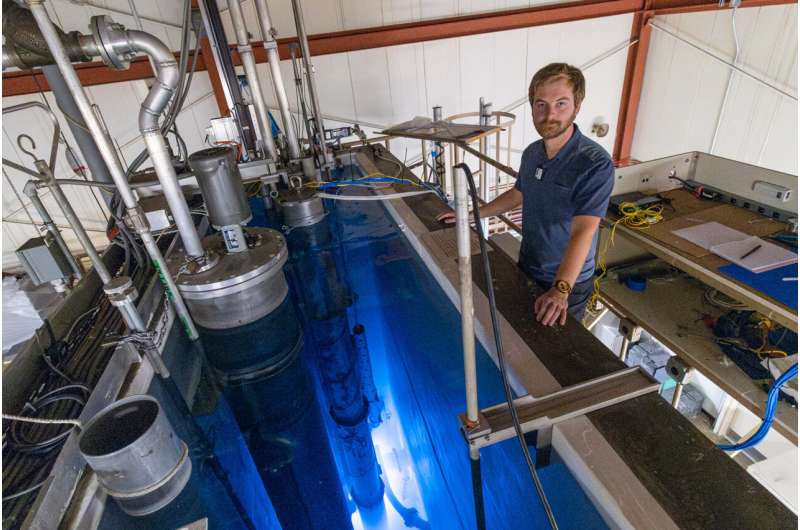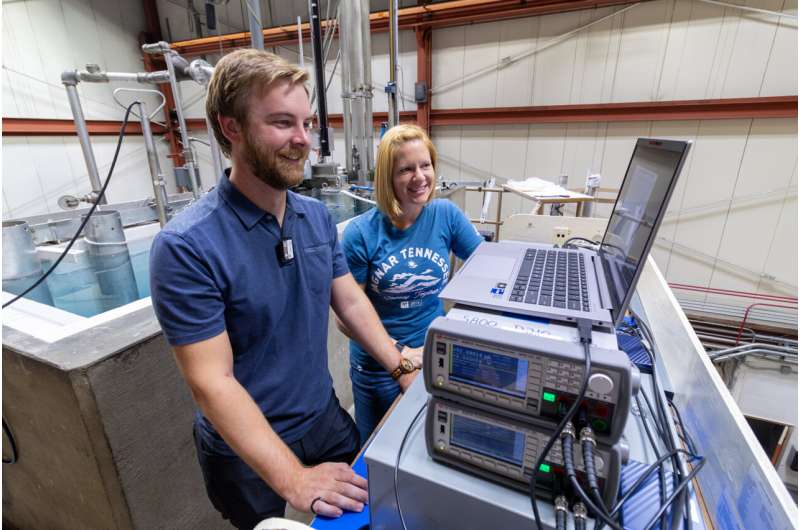
The safety and efficiency of a large, complex nuclear reactor can be enhanced by hardware as simple as a tiny sensor that monitors a cooling system. That's why researchers at the Department of Energy's Oak Ridge National Laboratory are working to make those basic sensors more accurate by pairing them with electronics that can withstand the intense radiation inside a reactor.
The ORNL research team recently met with unexpectedly high success using a gallium nitride semiconductor for sensor electronics. A transistor made with the material maintained operations near the core of a nuclear reactor operated by research partner The Ohio State University.
Gallium nitride, a wide-bandgap semiconductor, had previously been tested against the ionizing radiation encountered when rockets hurtle through space. Devices with wide-bandgap semiconductors can operate at much higher frequencies, temperatures and irradiation rates. But gallium nitride had not faced the even more intense radiation of neutron bombardment.
"We are showing it is great for this neutron environment," said lead researcher Kyle Reed, a member of the Sensors and Electronics group at ORNL.
That could offer a big boost for equipment monitoring in nuclear facilities. The information gathered by sensors provides early warnings about wear and tear on equipment, allowing timely maintenance to avoid broader equipment failures that cause reactor downtime. Currently, this sensing data is processed from a distance, through yards of cable connected to electronics with silicon-based transistors.
"Our work makes measuring the conditions inside an operating nuclear reactor more robust and accurate," Reed said. "When you have lengthy cables, you end up with a lot of noise, which can interfere with the accuracy of the sensor information. By placing electronics closer to a sensor, you increase its accuracy and precision." To meet that goal, scientists need to develop electronics that can better tolerate radiation.

Researchers irradiated gallium nitride transistors for three days at temperatures up to 125 degrees Celsius close to the core of The Ohio State University Research Reactor.
"We fully expected to kill the transistors on the third day, and they survived," Reed said. The team pushed the transistors all the way to the reactor's safety threshold: seven hours at 90% power.
The gallium nitride transistors were able to handle at least 100 times higher accumulated dose of radiation than a standard silicon device, said researcher Dianne Ezell, leader of ORNL's Nuclear and Extreme Environment Measurements group and a member of the transistor research team.
She said the transistor material must be capable of surviving at least five years, the normal maintenance window, in the pool of a nuclear reactor. After the research team exposed the gallium nitride device to days of much higher radiation levels within the core itself, they concluded that the transistors would exceed that requirement.
This is an important technical advance as attention turns from the large-scale existing fleet of nuclear energy plants to microreactors that could generate from tens to hundreds of megawatts of power. Although these novel reactor designs are still in the development and licensing stage, their potential portability could allow them to be deployed on the back of a truck to a military or disaster zone.
Citation: Hardy transistor material could be game-changer for nuclear reactor safety monitoring (2024, June 24) retrieved 24 June 2024 from https://techxplore.com/news/2024-06-hardy-transistor-material-game-changer.html
This document is subject to copyright. Apart from any fair dealing for the purpose of private study or research, no part may be reproduced without the written permission. The content is provided for information purposes only.
